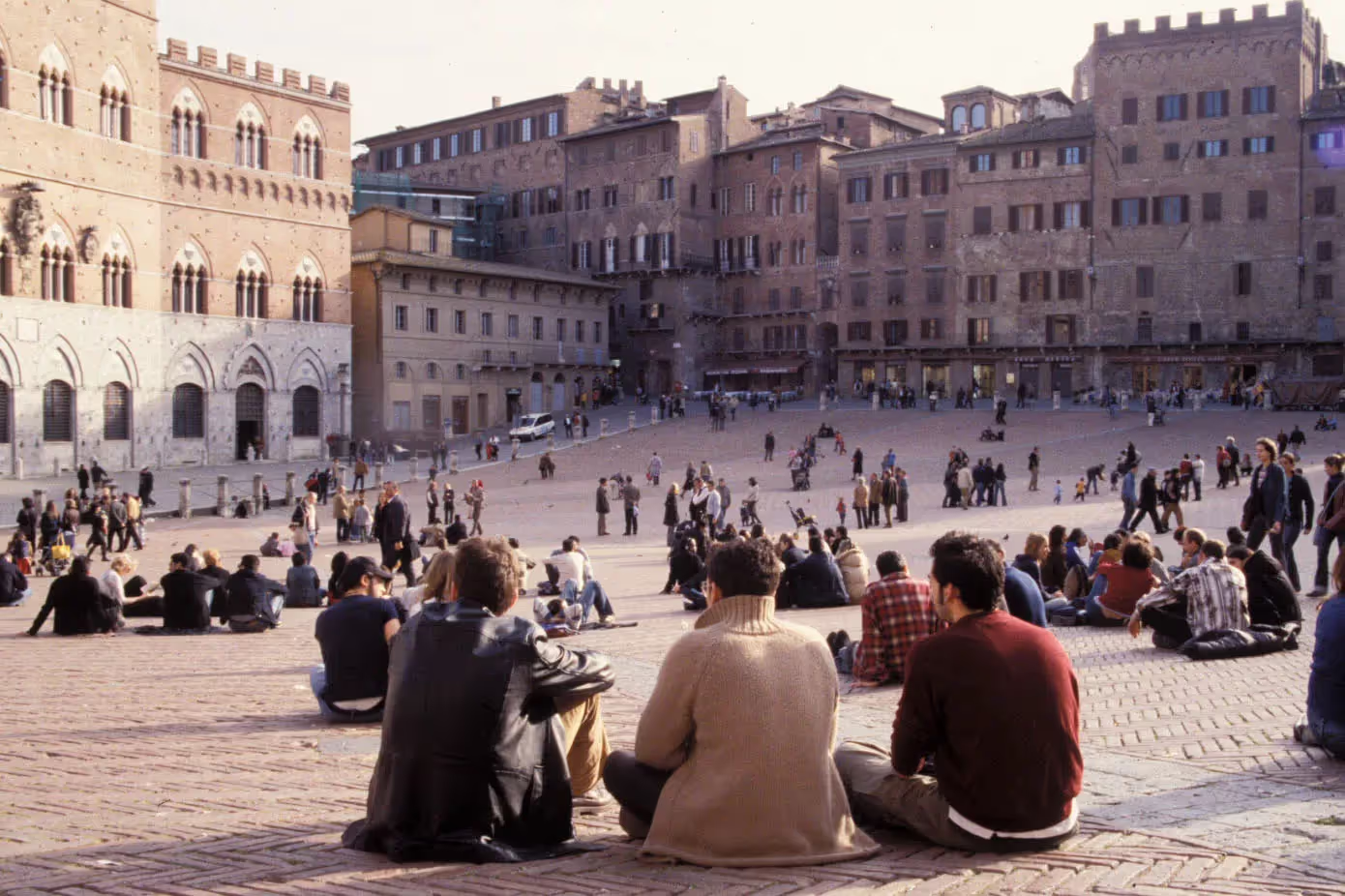A biweekly newsletter with public space news, resources, and opportunities.
A curated dispatch on all things public markets plus the latest announcements from the Market Cities Program.
Please note that these Hall of Shame nominations were written in a moment in time (most over a decade ago) and likely have since changed or even been transformed. If the above entry is now great, or still not so great, go ahead and comment below on how it has evolved or nominate it as a great place.


Unlike most public spaces, Piazza del Campo does not provide benches or furniture for use by visitors. Users of the space often sit on the red brick floors of the square, wherever they feel most comfortable. Normally, this occurs along the edges of the square where the shadows of the surrounding buildings create cool, shaded spots.
Additionally, the open plan of the square provides flexibility in the types of activities that occur in the space. Public performances and other informal activities often occur in the center of the square because the downward slope of the space creates a natural amphitheater for spectators. This slope also provides navigational orientation for those venturing into the space for the first time.
The edge of the square is highly activated by the presence of cafés, museums and retail stores. These adjacent commercial activities provide a steady stream of pedestrian traffic into the square, especially that of tourists. Piazza del Campo’s majestic design and arrangement provides the best vantage point to admire the national monuments surrounding the space.
Situated at the junction of three hills, Piazza del Campo is one of the most revered open spaces in Europe. In fact, the City of Siena is famously known for being built entirely around this Piazza. Commissioned in 1349 by the ruling body Council of Nine, Piazza del Campo was designed to symbolize their power and assertion. The square’s spoke-like paving pattern radiates out from the facade of the Palazzo Pubblico and divides into nine sections. Each section is held to be symbolic of The Nine who governed Siena at the height of its medieval reign.
As the physical center of the city, the square has been the site for many of Siena’s civic and cultural activities including annual bullfights, festivals, and il Palio, a famous 90-second horse race that occurs twice a year. Most importantly, the square is home to the central market and the Gothic-style civic museum (previously, the Town Hall). Today, the unique semicircular open space is part of a UNESCO World Heritage Site.
All images from Flickr - At top: Cristina BejaranoFrom left: Cristina Bejarano, Shadowgate, Alexander Baxevanis
Website: Historic Site of Siena, UNESCO



*Please note that these Hall of Shame nominations were written in a moment in time (most over a decade ago) and likely have since changed or even been transformed. If the above entry is now great, or still not so great, go ahead and comment below on how it has evolved or nominate it as a great place.